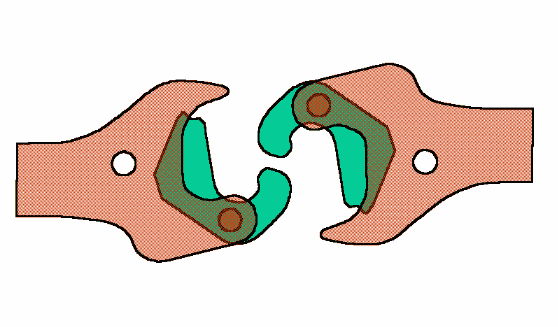
By far the most common coupler seen around the world is known variously as the "Knuckle", "Buckeye" or "Janney" coupler, animation above.
This is an automatic, mechanical coupler of a design originating in the US and commonly used in other countries for both freight and passenger vehicles.
It is standard on UK hauled passenger vehicles and on the more modern freight wagons. The term "Buckeye" comes from the nickname of the US state of Ohio "the Buckeye state" and the Ohio Brass Co. which originally marketed the coupler.
It was invented in 1879 by a US civil war veteran named Eli Janney, who wanted to find a replacement for the link and pin couplers then standard in the US.
Link and pin coupler required staff to stand between cars to couple and uncouple and there were many injuries and even deaths as a result.
Janney's invention solved these problems and was taken up by a number of lines. The device eventually became standard when the link and pin coupler was banned by the US government in 1900.
The coupler (shown above) is made of cast steel and consists of four main parts. The head itself, the jaw or knuckle, the hinge pin, about which the knuckle rotates during the coupling or uncoupling process and a locking pin.
The locking pin is lifted to release the knuckle. It does this by raising a steel block inside the coupler head which frees the knuckle and allows it to rotate.
From http://www.railway-technical.com/design-details.shtml
Nice informative blog.
ReplyDeletewe are manufacturer of bucket elevators in India.Please visit for details
1. Bucket Elevators
2.Centrifugal Discharge Bucket Elevators
3 Continuous Discharge Bucket Elevtors
4.Bucket Elevtors for Bulk materilas handling